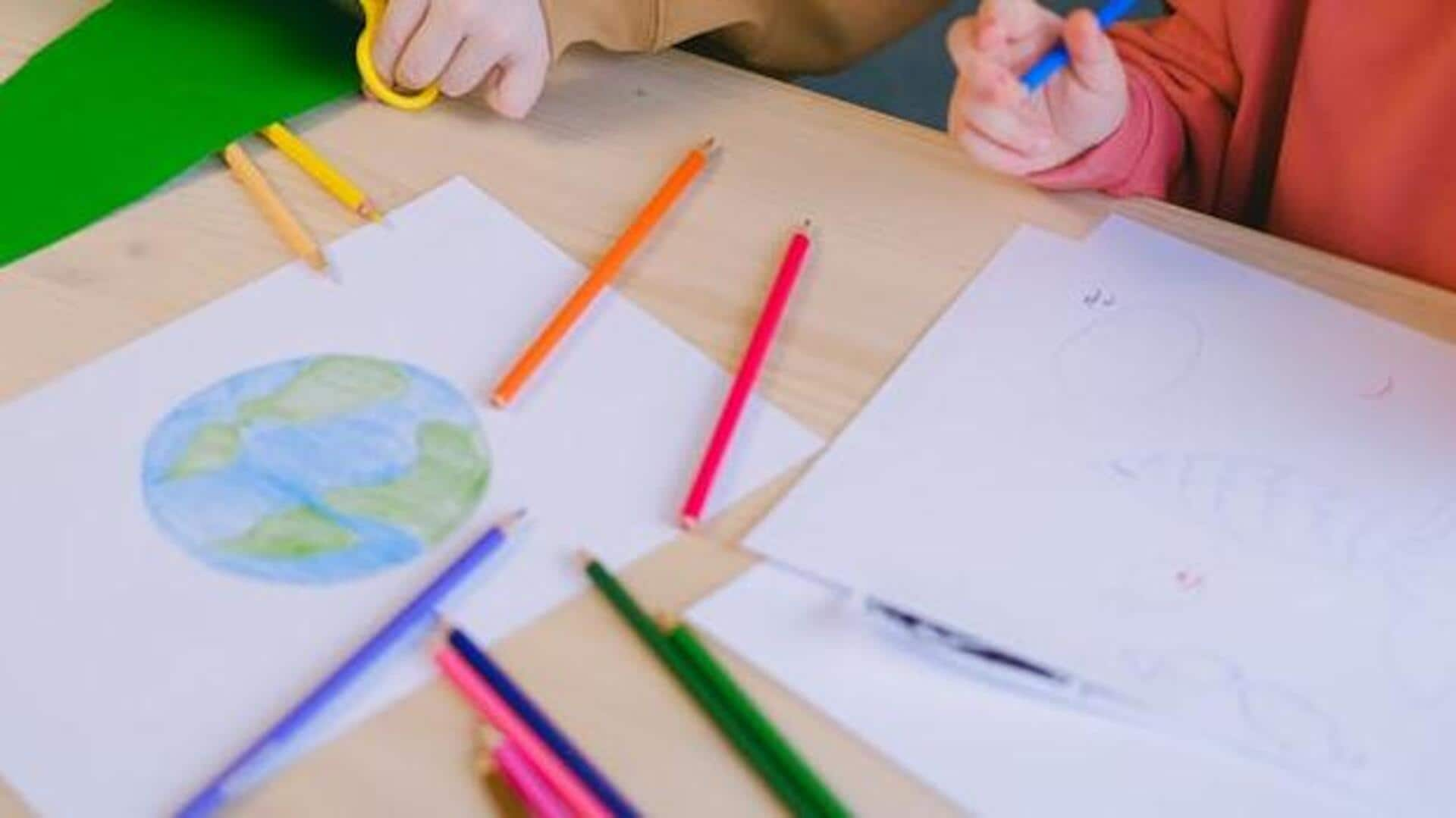
Teaching resourcefulness with DIY craft projects for kids
What's the story
Crafting isn't just fun for kids, it teaches them valuable lessons in resourcefulness and creativity. By creating their own DIY projects, children learn to see the potential in everyday items and develop skills they can use throughout life. This article features craft projects that inspire thinking outside the box, utilizing what's on hand, and cultivating a can-do spirit.
Recycling basics
Start with simple recycling projects
Fostering creativity and resourcefulness can begin with simple recycling projects. Encourage children to transform everyday items like toilet paper rolls, old magazines, and empty plastic bottles into works of art. Toilet paper rolls can become binoculars for exploring or characters for a story. This not only reduces waste but also teaches the value of reusing materials rather than throwing them away.
Crafting space
Create a DIY craft corner
Set aside a small area in your home as a crafting station that kids can access anytime they want. Fill it with glue, scissors, paper scraps, fabric remnants, and whatever else you think will spark their imagination. This allows children to feel comfortable trying out crafting on their own, and makes it super easy for them to begin a project whenever they feel like it.
Nature crafts
Incorporate nature into crafts
Motivate kids to use natural elements in their crafts. Leaves can be utilized for prints or collages; sticks can be transformed into picture frames or mobiles; stones can be painted or used as markers in a homemade board game. These activities not only cultivate an appreciation for nature but also educate kids to see beauty and utility in everyday objects around them.
Focus on creativity
Emphasize process over product
It's important for children to understand that the value in crafting comes from the creative process, not the finished product. Fostering a sense of play, encouraging experimentation, and letting go of the need for perfection cultivates resilience and adaptability in children. This philosophy nurtures a creative and resourceful spirit, emphasizing the joy of the journey over the destination.
Creative Solutions
Introduce problem-solving challenges
Give them challenges that require them to solve a problem using only the materials in their craft corner. For instance, task them with creating something that could help someone stay dry in the rain or keep something cold on a hot day. These challenges encourage critical thinking and creativity, while teaching them that many problems can be solved with simple materials and a little ingenuity.